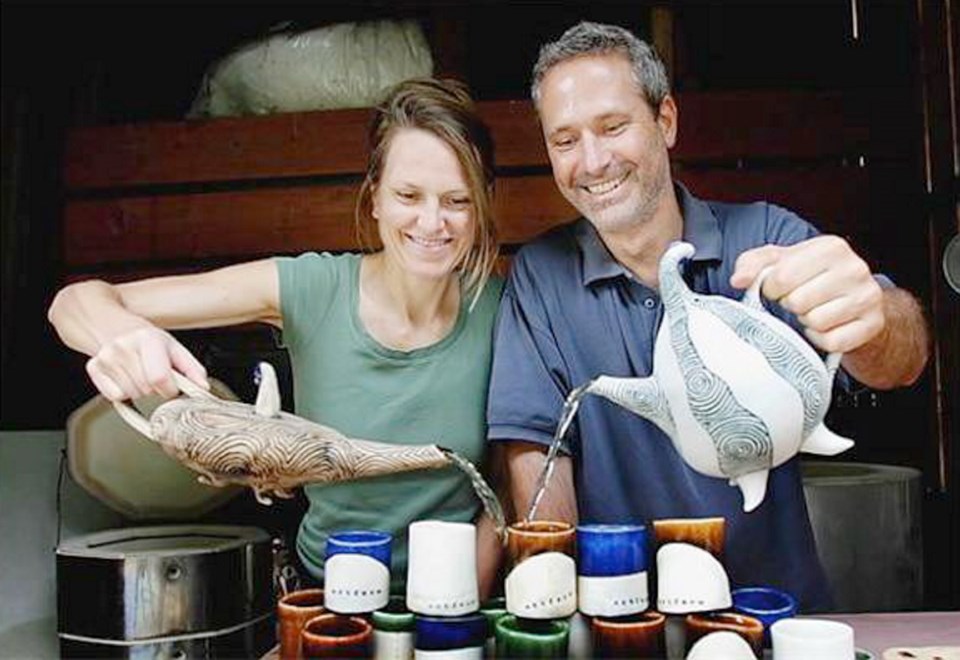The eyes of the tea world are on the Cowichan Valley and Canada’s first commercial tea harvest.
Four years ago, Victor Vesely and Margit Nellemann planted 200 tea trees — Camellia sinensis — on their 11-acre Cowichan Valley Teafarm. As the trees arrive at maturity, the couple is hoping to begin harvesting their leaf tips and buds next spring, creating Canada’s first tea.
Much is riding on that first sip, said Vesely.
“If it’s not good, Canadian tea will be dismissed as a gimmick,” he said.
But if it is, Vesely imagines a future similar to that of the B.C. wine industry, which has grown exponentially over the last 10 years.
“There will be no tea in the world that tastes like ours,” he said.
That’s because, similar to wine, a tea’s taste is influenced by terroir — the soil, air and water where the tea plants are grown impart a distinct flavour.
Early in Vesely and Nellemann’s tea-growing journey, they worried that weather extremes — dry summers and snowy winters — would negatively impact their product. But they have since learned that while temperature fluctuations can be hard on the plants themselves, such extremes benefit a tea’s flavour.
Teafarm’s tea trees are hardy and well-established, so coming off a hot and dry summer, the couple is excited to taste next year’s tea leaves.
Vesely said they are still unsure what kind of tea they will create with them — black, green, oolong or white — as each type comes from the same plant, but is processed differently.
“We are still developing our tea style,” he said mysteriously.
But while the couple awaits their first harvest, they are never idle.
This past spring, they planted 400 tea seedlings. Throughout the summer they have been hand-picking mature tea leaves for use in baking and cooking (only the tender leaf tips and buds are used for tea), and this fall they will sell tea flowers to local chefs for use as a garnish.
In addition to special events, Teafarm runs a tea shop and offers more than 100 tea blends for sale. Vesely and Nellemann create the blends using only organic ingredients and no synthetic flavourings. Nellemann also makes ceramic tea sets.
“Through history, tea has been linked to the evolution of ceramics. So we’re replicating that tradition in a very contemporary way,” Vesely explained.
The farm has welcomed tea enthusiasts from all corners of the world (although the couple continues to run into locals who don’t know they exist).
“We meet all kinds of people — from those who tell us they only drink Red Rose (in a tea bag), to someone who can stand and look at the plants and tell us we’ve experienced three frosts,” said Vesely.
Without a doubt, Canadian tea appreciation is growing, said Del Tamborini, co-founder and executive director of the Vancouver Tea Society.
“People are gradually realizing how broad the tea world is,” Tamborini said.
Second only to water, tea is the world’s most-consumed beverage. Canadians drink about 9.7 billion cups a year, according to Statistics Canada. An Agriculture and Agri-Food Canada survey predicted that number would rise 40 per cent by 2020.
Vancouver boasts a vibrant tea community, as well as dozens of tea shops, said Tamborini. The tea society hosts educational gatherings and tastings, including an upcoming event on Sept. 12 (details can be found on the Vancouver Tea Society Facebook page). The group is also planning a tea festival for 2015.
Asked if tea is simply a trend, Tamborini said that while some people might come to it because of its growing popularity, tea has never been a trend.
“It has been consumed for 5,000 years and cultivated for 2,000 years. As much as interest has grown, I think we’re still at the bottom of the growth curve. It is a beverage that will endure.”
About 55 countries around the world produce tea, he added.
Soon, it could be 56.



